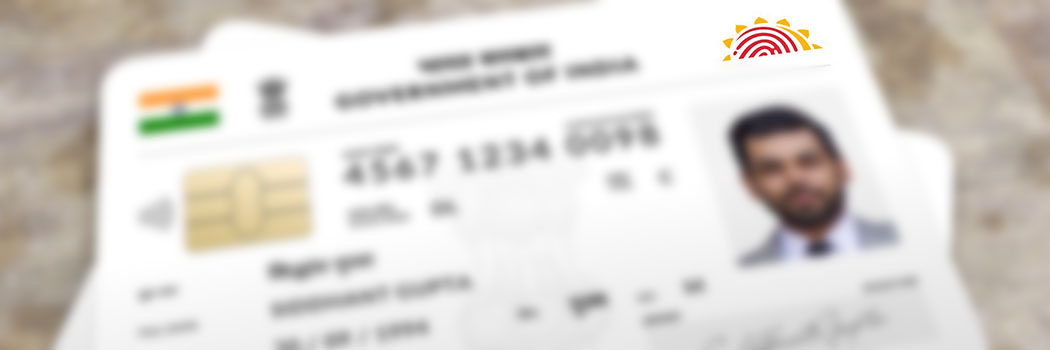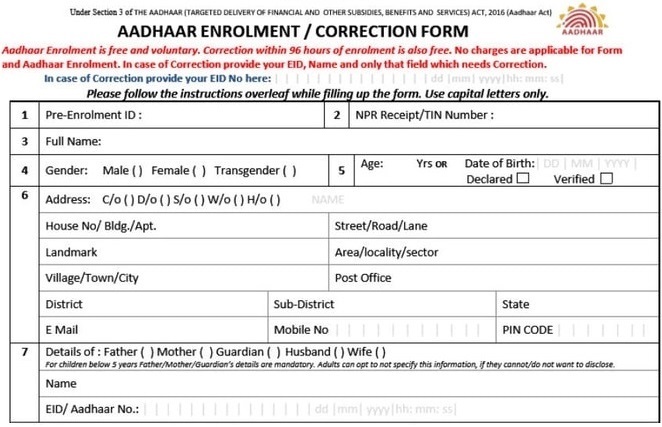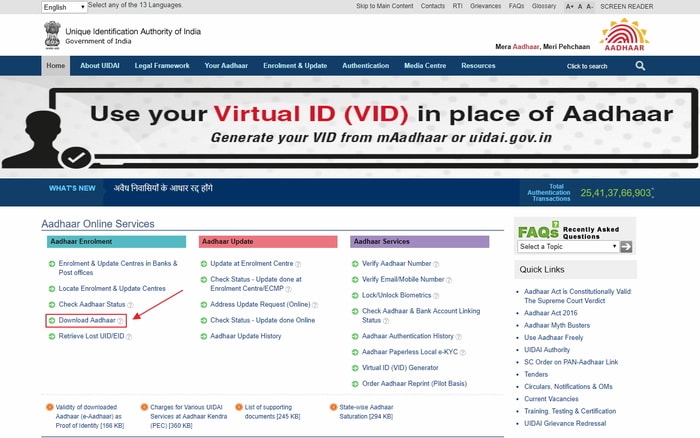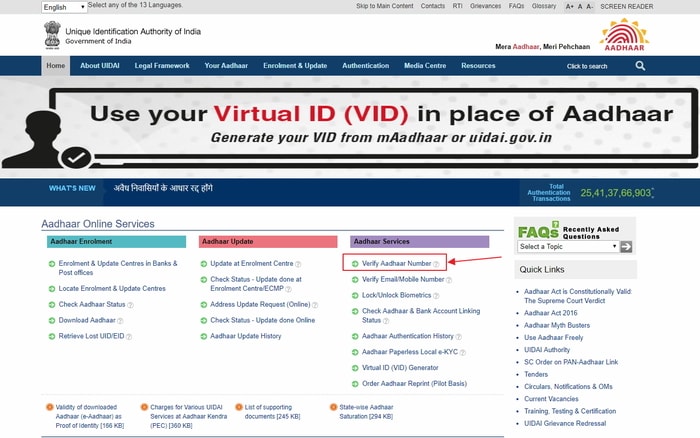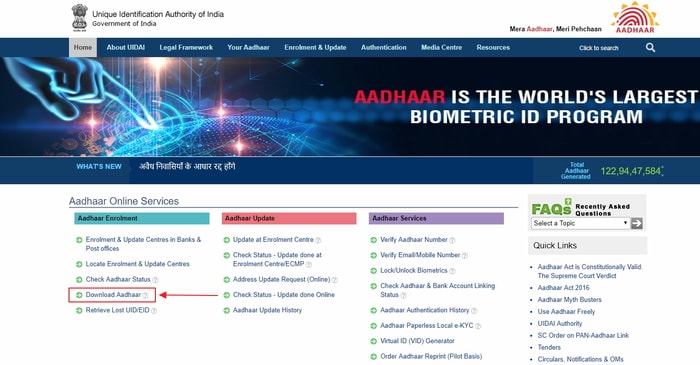This article has been just updated: January 15, 2024
Described as the most sophisticated ID program in the world, Aadhaar is a 12-digit unique identity number based on biometric and demographic data of residents of India. The authority responsible for collecting the data on which Aadheer is based, the Unique Identification Authority of India (UIDAI) was established in January 2009, and the program has since then grown to become the world’s largest biometric ID system. If you still don’t have your Aadhaar or don’t know much about the program, this article will answer all your questions.
What Is Aadhaar?
Aadhaar is a 12-digit unique identification number that’s issued to every individual resident of India by the Indian government. The authority responsible for issuing and managing it is the Unique Identification Authority of India (UDAI), a government-run organization based in Delhi and created by the government of India on July 12, 2016.

Each citizen’s Aadhaar number is stored on the so-called Aadhaar card along with other personal information and biometric data, including name, date of birth, gender, photograph, residential address, finger prints, and iris scan.
How to Get Aadhaar Card?
To get your Aadhaar card:
- Visit your nearest enrolment center. You can find an up-to-date list of enrolment centers here: https://uidai.gov.in/enrolment-update/aadhaar-enrolment.html.
- Fill the Aadhaar application form. You will be required to provide basic details about yourself, including your name, age, gender, address, and others.

- Submit your biometric data to the UIDAI database.
- Wait a few days for the UIDAI system to issue your unique Aadhaar number.
- It takes between 60 and 90 days for your Aadhaar card to be dispatched. You can check its status here: https://resident.uidai.gov.in/check-aadhaar-status.
How to Download Aadhaar Card?
To download your Aadhaar card, complete the following seven steps:
- Go to: https://uidai.gov.in/.
- Under “Aadhaar Enrolment,” click the “Download Aadhaar” link.

- Enter either your 28-digit enrolment ID, which is included in the acknowledgement slip you received after you submitted your personal information and biometric data in your enrolment center.
- Fill in other required information.
- Click the “Request OTP [one-time password].” A pop-up message will appear and ask you for the last four digits of your mobile phone number. The one-time password will be sent to this number.
- Enter the OTP and click “Download Aadhaar.”
- Unlock the downloaded file using the first four letters of your name and your year of birth.
How to Verify Aadhaar Card Online?
To use your Aadhaar card, you need to make sure your Aadhaar number is active and that the details on your Aadhaar card match those available in the UIDAI database:
- Go to: https://uidai.gov.in/.
- Under “Aadhaar Services,” click the “Verify Aadhaar Number” link.

- Enter your 12-digit Aadhaar number and solve the captcha.
- Wait for the website to confirm that your Aadhaar number is active by stating that it exists.
• If you’re unable to verify your Aadhaar number, visit the nearest enrollment center and ask for help. Take with you all the documents you received along when you got your Aadhaar card.
How to Generate VID with e-Aadhaar?
Given the sensitive nature of the information stored on your Aadhaar card, it’s understandable that you might feel reluctant to submit your Aadhaar number and card to various service providers. That’s why UIDAI launched the Aadhaar virtual ID, also known as VID. This random, temporary ID is a safer alternative to your unique biometric number, and you can generate it in a few simple steps:
- Go to: https://eaadhaar.uidai.gov.in/.
- Choose one of the three options on how to generate an e-Aadhaar card: Aadhaar, VID, or enrolment ID.
- Wait until you receive a one-time password on your mobile phone.
- Click the “Download Aadhaar” link under “Aadhaar Enrolment” on the following page: https://uidai.gov.in/.

- Download your e-Aadhaar card.
- Open it using the one-time password.
Uses of Aadhaar
Even though Aadhaar is still relatively young, the Indian government has already come up with many use cases for it:
- Income tax – Aadhaar simplifies income tax filing and is expected to help curb income tax frauds, thus generating money for the government that can be used for various welfare programs.
- Identity card – Arguably the main benefit of Aadhaar is that it dramatically simplifies identification at various government and private institutions.
- Attendance systems – Biometric attendance systems based on Aadhaar were introduced in government offices in July 2014. The systems allow the public to see the daily attendance of government employees on the internet, which helps combat absenteeism. The system proved to be so successful that it inspired other governments to implement similar attendance-tracking measures.
- Reduces processing time – Because the Aadhaar card contains so much personal and biometric information, it can greatly expedite common administrative tasks. For example, you can get a new passport in just 10 days with Aadhaar.
- Driving license – There are plans to use the Aadhaar card as a substitute for the driver’s license, which would mean that residents could carry just a single personal ID for basically everything.
- Proof of residence – Aadhaar is widely accepted as a proof of residence by many government and private services and organizations.
- Bank accounts – Aadhaar has the potential to dramatically improve bank security and bring greater transparency to financial services.
- Direct benefit transfer – Aadhaar has been linked to some public subsidy and unemployment benefit schemes, where the subsidy money is directly transferred to a bank account which is Aadhaar-linked.
- Scholarship – The government requires students to provide their Aadhaar card when applying for an academic scholarship. Thanks to Aadhaar, the government has already been able to stop thousands of fake students from receiving money.
Conclusion
![]() Aadhaar is a wildly ambitious project with the potential to transform India and make it one of the most digitized countries in the world. So far, the adoption of Aadhaar has been fairly smooth, and there are already many use cases for Aadhaar in the public and private sectors alike. If you still haven’t applied for your Aadhaar card, you can do so by completing the seven steps described above.
Aadhaar is a wildly ambitious project with the potential to transform India and make it one of the most digitized countries in the world. So far, the adoption of Aadhaar has been fairly smooth, and there are already many use cases for Aadhaar in the public and private sectors alike. If you still haven’t applied for your Aadhaar card, you can do so by completing the seven steps described above.
FAQ
What is an Aadhaar Card?
An Aadhaar Card is a 12-digit unique identification number issued by the Indian government to residents. It’s a centralized and universal identity number that helps individuals access a variety of services and benefits provided by the government. It is managed by the Unique Identification Authority of India (UIDAI).
Who can apply for an Aadhaar Card?
Any resident of India, regardless of age or gender, can apply for an Aadhaar Card. It is also available for newborns and is not determined by their citizenship status.
Is it mandatory to obtain an Aadhaar Card?
No, obtaining an Aadhaar Card is voluntary. However, it is increasingly becoming a prerequisite for availing numerous government services and subsidies.
What documents are required to apply for an Aadhaar Card?
Applicants are required to provide proof of identity, proof of address, and proof of date of birth documents. These can include a passport, PAN card, voter ID, among others for identity proof, and utility bills, bank statements for address proof.
How can I apply for an Aadhaar Card?
You can apply for an Aadhaar Card by visiting an Aadhaar Enrollment Center. Fill out the enrollment form, submit the required documentation, provide biometric data, and you will receive an acknowledgment slip with an Enrollment ID.
Can I apply for Aadhaar online?
While the initial process requires you to visit an enrollment center for biometric data, you can begin your application online by filling out the form on the UIDAI’s official website. This step will save you time during the in-person visit.
How do I check the status of my Aadhaar application?
To check the Aadhaar Card application status, visit the UIDAI website and use the Enrollment ID from the acknowledgment slip to track your application.
What is the turnaround time for receiving an Aadhaar Card after enrollment?
After enrolling, it may take up to 90 days, sometimes less, for the Aadhaar Card to be processed and dispatched to the applicant’s address.
Is there a fee associated with applying for an Aadhaar Card?
No, there is no fee for applying for a new Aadhaar Card. However, there may be a nominal fee for other services like updating details or obtaining duplicate copies.
What services and benefits can be accessed using an Aadhaar Card?
Aadhaar Card holders can access a plethora of services and benefits including social welfare schemes, banking services, tax-related services, and more due to its wide acceptance as proof of identity and residence.
How can I update details on my Aadhaar Card?
Changes in details can be made by submitting an update request online through the UIDAI portal or by visiting an Aadhaar Enrollment Center. You’ll need to provide relevant documents to support the update request.
Can an Aadhaar Card be used as a proof of citizenship?
No, an Aadhaar Card is not proof of citizenship. It only serves as proof of identity and residence in India.
What should I do if I lose my Aadhaar Card?
If you lose your Aadhaar Card, you can download a replacement from the UIDAI website or visit a nearby Aadhaar Enrollment Center for a reprint.
How is biometric data used in Aadhaar?
Biometric data, including fingerprints and iris scans, is used to ensure the uniqueness of each Aadhaar Card and to prevent fraud. It is also used for authentication purposes in various services.
Can I link my Aadhaar with my bank account?
Yes, you can link your Aadhaar Card with your bank account to receive government subsidies directly and for simplified KYC processes.
How secure is my personal information with Aadhaar?
The UIDAI employs multiple layers of security to safeguard personal information linked to Aadhaar. They utilize encryption and adhere to strict privacy guidelines to protect user data.
What is the process of Aadhaar authentication?
Aadhaar authentication involves verifying a person’s Aadhaar number and demographic or biometric information recorded in the CIDR. This process is used to ensure that Aadhaar-linked services are accessed by the rightful owners.
What is Aadhaar e-KYC and how does it work?
Aadhaar e-KYC is a paperless process wherein the service provider can perform a KYC check electronically with consent from the customer. It uses Aadhaar’s online databases for verification, improving efficiency and reducing the risk of document forgery.
Is it possible to de-link Aadhaar from previously linked services?
Yes, if required, individuals can submit a request to service providers to de-link their Aadhaar Card from the services previously linked, complying with recent Supreme Court directives and privacy concerns.
Where can I find a list of Aadhaar Enrollment Centers?
You can find a list of Aadhaar Enrollment Centers on the UIDAI official website. The portal provides a searchable database of centers based on location.


